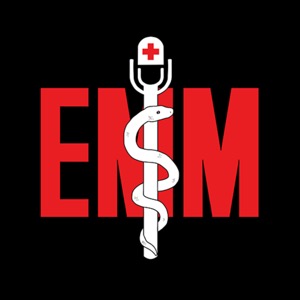Episode 915: Severe Burn Injuries
Emergency Medical Minute - Un pódcast de Emergency Medical Minute - Lunes

Contributor: Megan Hurley, MD Educational Pearls: Initial assessment of patients with severe burn injuries begins with ABCs Airway: consider inhalation injury Breathing: circumferential burns of the trunk region can reduce respiratory muscle movement Circulation: circumferential burns compromise circulation Exposure: Important to assess the affected surface area Escharotomy: emergency procedure to release the tourniquet-ing effects of the eschar Differs from a fasciotomy in that it does not breach the deep fascial layer PEEP = positive end-expiratory pressure The positive pressure remaining in the airway after exhalation Keeps airway pressure higher than atmospheric pressure Common formulas for initial fluid rate in burn shock resuscitation Parkland formula: 4 mL/kg body weight/% TBSA burns (lactated Ringer's solution) Modified Brooke formula: 2 mL/kg/% (also lactated Ringer's solution) Less fluid = lower risk of intra-abdominal compartment syndrome Lactated Ringer’s solution is preferred over normal saline in burn injuries Normal saline is avoided in large quantities due to the possibility of it leading to hyperchloremic acidosis References Acosta P, Santisbon E, Varon J. “The Use of Positive End-Expiratory Pressure in Mechanical Ventilation.” Critical Care Clinics. 2007;23(2):251-261. doi:10.1016/j.ccc.2006.12.012 Orgill DP, Piccolo N. Escharotomy and decompressive therapies in burns. J Burn Care Res. 2009;30(5):759-768. doi:10.1097/BCR.0b013e3181b47cd3 Snell JA, Loh NH, Mahambrey T, Shokrollahi K. Clinical review: the critical care management of the burn patient. Crit Care. 2013;17(5):241. Published 2013 Oct 7. doi:10.1186/cc12706 Summarized by Meg Joyce, MS1 | Edited by Meg Joyce & Jorge Chalit Donate: https://emergencymedicalminute.org/donate/
